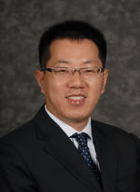Electric Boats at 2024 Cannes Show
SHOW REPORT
For more information on the marine market, visit MarineLink, the Power Systems Research proprietary marine products database.

More than 600 exhibitors from the marine pleasure industry showed off their latest models of boats, yachts, marine equipment and other products and services at the 47th annual Cannes Yachting Festival, Europe’s biggest in-water event, just closed its doors. The event ran Sept. 10-15.
An estimated 50,000 visitors attended the festival and got an excellent note for organization from all participants and visitors. The next year’s edition will be held Sept. 9-14, 2025.
The electric marine market has been very dynamic in the last 10 years and electric products and accessories were very popular at the show. Investments in research and development of new technologies and their implementation into boats have been extremely high.






